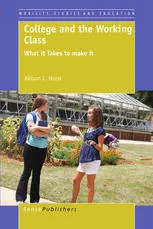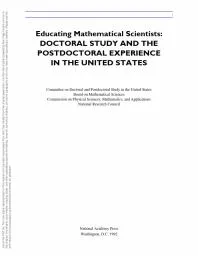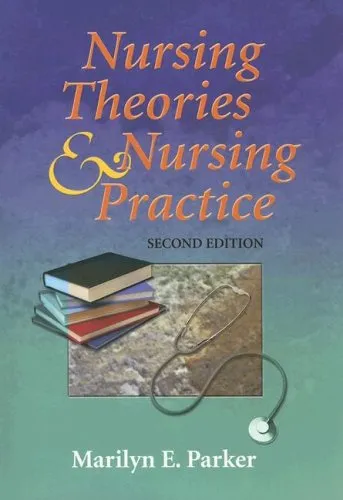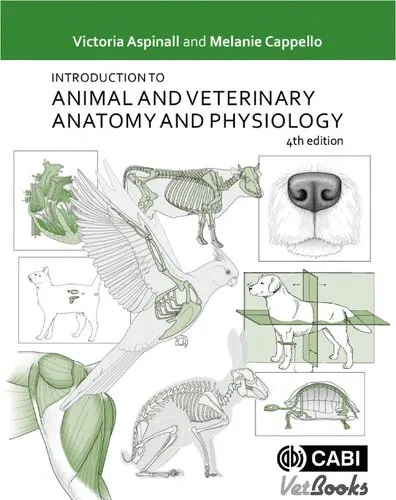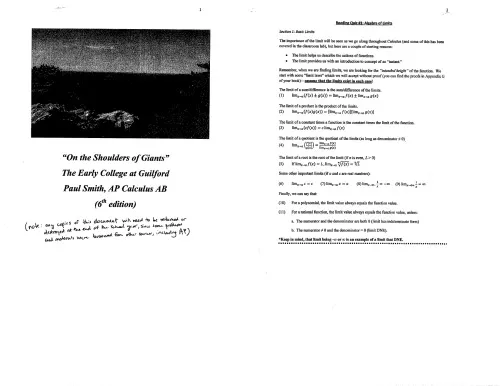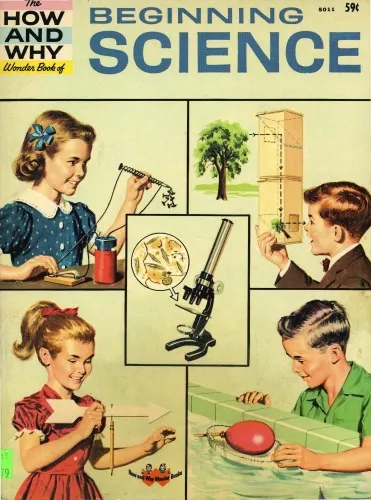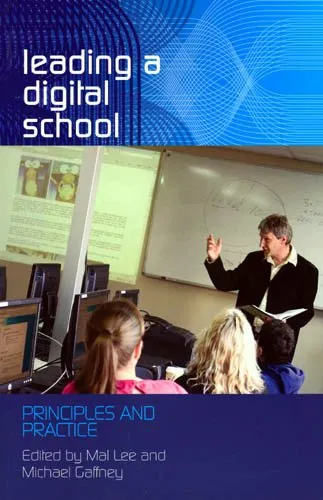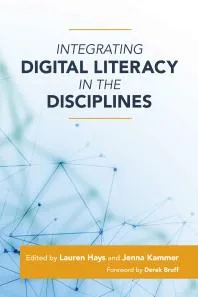College and the Working Class: What it Takes to make it
4.5
بر اساس نظر کاربران

شما میتونید سوالاتتون در باره کتاب رو از هوش مصنوعیش بعد از ورود بپرسید
هر دانلود یا پرسش از هوش مصنوعی 2 امتیاز لازم دارد، برای بدست آوردن امتیاز رایگان، به صفحه ی راهنمای امتیازات سر بزنید و یک سری کار ارزشمند انجام بدینکتاب های مرتبط:
معرفی کتاب "College and the Working Class: What it Takes to make it"
کتاب "College and the Working Class: What it Takes to make it" نوشته "آلیسون ال. هورست"، به طور عمیق مفاهیمی را بررسی میکند که به چالشها، تجربیات و داستانهایی میپردازند که دانشجویان طبقه کارگر در مسیر دانشگاهی خود با آن مواجه میشوند. این کتاب با روایتهای واقعی و تحقیقات محکم، نقش تحصیلات عالیه در شکلدهی هویت طبقاتی و اجتماعی را برجسته میکند. نویسنده، با سوابق دانشگاهی خود، دورهها و مسائلی که برای عبور از این چالشها مورد نیاز است را مورد واکاوی قرار میدهد.
همانطور که عنوان کتاب نشان میدهد، "چه چیزی برای موفق شدن لازم است؟" شرارهای از سوال بزرگتری است که بسیاری از دانشجویان کارگر و خانوادههایشان میپرسند: آیا دانشگاه واقعاً پلهای برای موفقیت است؟ و اگر هست، چگونه میتوان این مسیر دشوار را طی کرد؟ این کتاب نه تنها دیدگاههای اجتماعی و روایات شخصی را بررسی میکند، بلکه به خوانندگان کمک میکند تا درکی عمیقتر از امکانات، موانع و تضادهایی که در مسیر تحصیلات عالی ایجاد میشود، پیدا کنند.
خلاصهای جامع از کتاب
در کتاب "College and the Working Class"، آلیسون ل. هورست به تلاقی تحصیلات عالی و موقعیت طبقاتی پرداخته و تصور نادرست "فرصت برابر" در آموزش عالی را زیر سوال میبرد. نویسنده تجربیات روزمره دانشجویان طبقه کارگر را برجسته کرده و راههایی را که این دانشجویان به واسطه آن مجبورند هویت طبقاتی خود را تنظیم کنند، بیان میکند.
از طریق مصاحبهها و توصیفات عمیق، کتاب نشان میدهد که چگونه روابط، انتظارات اجتماعی، و حتی خود سیستم دانشگاهی میتواند کارآمد یا ناکارآمد باشد. همچنین توجه ویژهای به اثر مستقیم تحصیلات دانشگاهی در تغییر چشمانداز شغلی، هویت و حتی شرایط خانوادگی دانشجویان اختصاص داده شده است.
نکات کلیدی
- بررسی نقش نابرابری اجتماعی در دسترسی به دانشگاه و موفقیت در آن
- راههایی که دانشجویان طبقه کارگر تطبیق با محیط دانشگاه را پیش میبرند
- اهمیت تعامل بین هویت اجتماعی و سیستمهای آموزشی در جامعه معاصر
- پیامدهای روانشناختی مسیر طولانی تغییر هویت طبقاتی
جملات معروف از کتاب
“The journey to and through college is not isolated from class background; it is shaped and often hindered by it.”
“Class is not just an economic status – it is a lived experience, one that marks every aspect of our education.”
چرا این کتاب اهمیت دارد؟
اهمیت این کتاب در تحلیل دقیق و شخصیسازیشده آن از تجربه دانشجوی طبقه کارگر نهفته است. برخلاف بسیاری از تحقیقات آکادمیک که صرفاً دادهها و آمارها را بررسی میکنند، نویسنده این اثر به عمق عواطف، ارتباطات و نابرابریهایی که دانشجویان را تحت تأثیر قرار میدهد، میپردازد. این کتاب برای جامعهشناسان، معلمان، دانشجویان و حتی سیاستگذاران الهامبخش خواهد بود. همچنین راهنمایی عملی برای کسانی است که به دنبال درک بهتر از موانع اجتماعی در مسیر تحقق تحصیلات عالیه هستند.
کتاب "College and the Working Class" بهوضوح نشان میدهد که آموزش عالی نه تنها به امکانات مالی نیاز دارد، بلکه دانشجویان نیازمند مهارتهای اجتماعی، روانشناختی و پشتیبانیهای گسترده برای غلبه بر شکافهای طبقاتی هستند. این کتاب به ما یاد میدهد که برای تحقق عدالت آموزشی، باید به ریشههای مشکلات نگاه کنیم و ساختارهای جامعه را تغییر دهیم.
Introduction to "College and the Working Class: What it Takes to Make it"
"College and the Working Class: What it Takes to Make it" is an illuminating exploration of the intersections between higher education and social class. Written by Allison L. Hurst, this book sheds light on the often-overlooked experiences of working-class students as they transition into, persist through, and ultimately reshape their lives through college. It navigates the nuanced challenges that arise when economic disparity and the traditional structures of higher education collide, providing vital insight into the grit, determination, and fortitude of those from working-class backgrounds.
Hurst delves deep into the lived experiences of working-class students, examining not just the material and academic obstacles they face, but also the cultural, emotional, and social turbulence that accompanies the journey. In an era where access to higher education is touted as a key stepping stone to upward mobility, the book confronts the idealistic rhetoric with stark realities, offering readers a critical yet empathetic lens through which to understand the personal and systemic challenges these students encounter.
This book serves as both an academic resource and a heartfelt narrative that advocates for change. With thought-provoking analysis and relatable stories, "College and the Working Class" appeals to educators, policymakers, students, and anyone interested in addressing inequity and creating more inclusive educational systems.
Detailed Summary of the Book
Allison L. Hurst structures the book around the transformative journey of working-class students in higher education, breaking it down into phases that capture their struggles and triumphs.
The book begins with a historical context, exploring the systemic barriers that have long excluded the working class from higher education opportunities. Hurst highlights how societal expectations, economic pressures, and cultural dissonance often hinder access and success for these students. She closely examines how these barriers morph over the years, especially as societal values shift around education and labor.
Hurst then moves into the students' lived realities, capturing their feelings of alienation in academic settings. From the "hidden curriculum" of middle-class norms to the overwhelming costs of attending college, the challenges presented are both external and internal. The discussion also touches on family dynamics, exploring how relationships with parents and siblings are strained or strengthened as students strive for upward mobility.
Integral to the narrative is the resilience of working-class students. Hurst showcases their resourcefulness and perseverance, framing these qualities as crucial elements that enable survival and success despite the odds. The book concludes with practical recommendations for institutions, urging them to adopt equitable policies and provide robust support systems to bridge the gap for working-class students.
Key Takeaways
- Access to higher education is not enough; systemic barriers must be addressed to ensure equity for working-class students.
- Culture clashes between working-class values and academic norms often create alienation and dual-identity struggles.
- Financial insecurity remains one of the largest obstacles for working-class students, affecting every aspect of their academic journey.
- Support systems, both formal and informal, are key to helping these students thrive in higher education environments.
- Institutions must rethink their approaches to pedagogy, policy, and student engagement to foster inclusivity and equity.
Famous Quotes from the Book
- “Education may be dubbed the great equalizer, but this ideal often crumbles under the weight of systemic inequality.”
- “For working-class students, college is not just about acquiring knowledge; it is about navigating a cultural battlefield.”
- “Success is not just persistence—it’s persistence in the face of a world that was not designed for you to succeed.”
- “Bridging the gap is not the responsibility of the student alone; institutions must meet them halfway.”
- “Understanding the challenges of working-class students means understanding the structures that sustain inequality.”
Why This Book Matters
Higher education often touts itself as the ladder to social mobility, yet too often the voices and experiences of working-class students are marginalized. This book is an urgent call to listen, understand, and act. It illustrates not just the individual battles faced by these students but the larger systemic and cultural shifts needed to make education an inclusive experience for all. By shining a light on the disparity between rhetoric and reality, Hurst compels readers to rethink their assumptions about education and class.
For educators, policymakers, and academic leaders, "College and the Working Class" provides practical insights into how institutions can evolve to support a genuinely equitable learning environment. For working-class students themselves, the book serves as validation—a recognition of their struggles and a celebration of their triumphs.
In a time when social mobility is more critical than ever, this book paints a clear and urgent picture of why equitable education must remain at the forefront of social change.
دانلود رایگان مستقیم
شما میتونید سوالاتتون در باره کتاب رو از هوش مصنوعیش بعد از ورود بپرسید
دسترسی به کتابها از طریق پلتفرمهای قانونی و کتابخانههای عمومی نه تنها از حقوق نویسندگان و ناشران حمایت میکند، بلکه به پایداری فرهنگ کتابخوانی نیز کمک میرساند. پیش از دانلود، لحظهای به بررسی این گزینهها فکر کنید.
این کتاب رو در پلتفرم های دیگه ببینید
WorldCat به شما کمک میکنه تا کتاب ها رو در کتابخانه های سراسر دنیا پیدا کنید
امتیازها، نظرات تخصصی و صحبت ها درباره کتاب را در Goodreads ببینید
کتابهای کمیاب یا دست دوم را در AbeBooks پیدا کنید و بخرید
1241
بازدید4.5
امتیاز0
نظر98%
رضایتنظرات:
4.5
بر اساس 0 نظر کاربران
Questions & Answers
Ask questions about this book or help others by answering
No questions yet. Be the first to ask!
